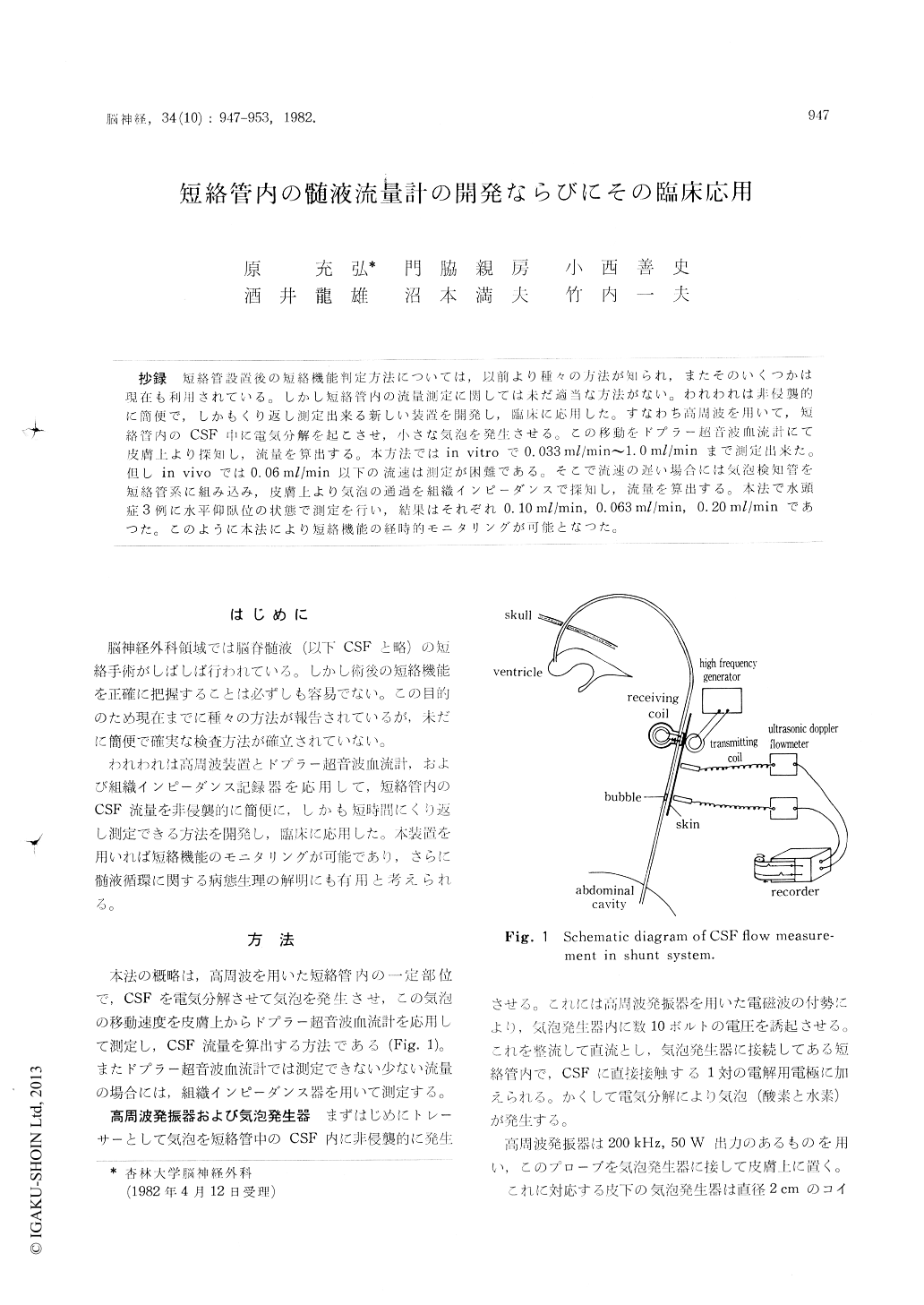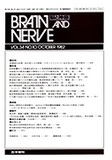Japanese
English
- 有料閲覧
- Abstract 文献概要
- 1ページ目 Look Inside
抄録 短絡管設置後の短絡機能判定方法については,以前より種々の方法が知られ,またそのいくつかは現在も利用されている。しかし短絡管内の流量測定に関しては未だ適当な方法がない。われわれは非侵襲的に簡便で,しかもくり返し測定出来る新しい装置を開発し,臨床に応用した。すなわち高周波を用いて,短絡管内のCSF中に電気分解を起こさせ,小さな気泡を発生させる。この移動をドプラー超音波血流計にて皮膚上より探知し,流量を算出する。木方法ではin vitroで0.033ml/min〜1.0ml/minまで測定出来た。但しin vivoでは0.06ml/min以下の流速は測定が困難である。そこで流速の遅い場合には気泡検知管を短絡管系に組み込み,皮膚上より気泡の通過を組織インピーダンスで探知し,流量を算出する。本法で水頭症3例に水平仰臥位の状態で測定を行い結果はそれぞれ0.10ml/min,0.063ml/min,0.20ml/minであつた。このように本法により短絡機能の経時的モニタリングが可能となつた。
An implantable device for measurement of cere-brospinal fluid (CSF) flow in a shunt tube has been developed. The unit is energized by an extracorporeal high frequency generator (200 kHz), and electrolysis creates bubbles in the shunt tube. Bubble flow velocity is detected as reflected sound using a pair of ultrasonic Doppler probes (Saneiso-kkuki Doppler Flowmeter Type 1935) placed apart on the skin surface and in parallel with the tube. CSF flow is expressed in ml/min. by calculating velocity and tube diameter.
The unit consists of a coil with a 200 kHz capa-citor, a silicon diode to rectify the high frequency, and a Zener diode to regulate maximum output voltage of 20 V. The output is fed to a pair of platinum electrodes inside the unit's tunnel through which the CSF flows. The unit is moulded in epoxy resin and coated with medical grade silicon rubber.
In vitro, CSF flow rates ranging from 0.033 ml/ min. to 1.0 ml/min. could be measured by this flowmeter model. In vivo, however, it was difficult to detect a flow rate of less than 0.006 ml/min.
To measure the slower flow rate, a so-called bubble-detecting-tube made from an 11 cm stainless steel tube coated with silicon rubber is centrally inserted between the two ends of the separated shunt tube. The bubble flow velocity is detected by a tissue impedance detector's pair of probes placed apart on the skin surface.
Clinically, CSF flow was measured in three cases of hydrocephalus (two cases of normal pres-sure hydrocephalus and one case of pineal tumor with non-cummunicating hydrocephalus). The flow rates were found to be, respectively, 0.10 ml/ min., 0.063 ml/min., and 0.20 ml/min.
The merits of the unit include its ability to repeatedly measure CSF flow at short intervals, and also to measure dynamic CSF flow under various conditions.

Copyright © 1982, Igaku-Shoin Ltd. All rights reserved.


